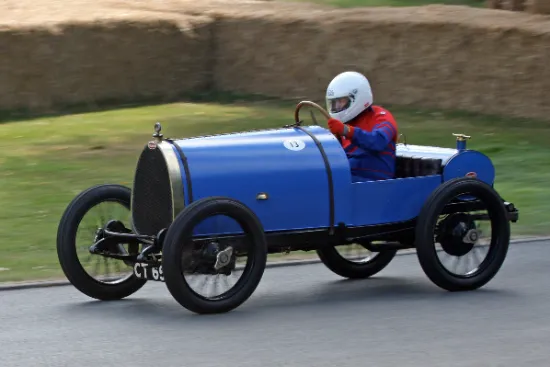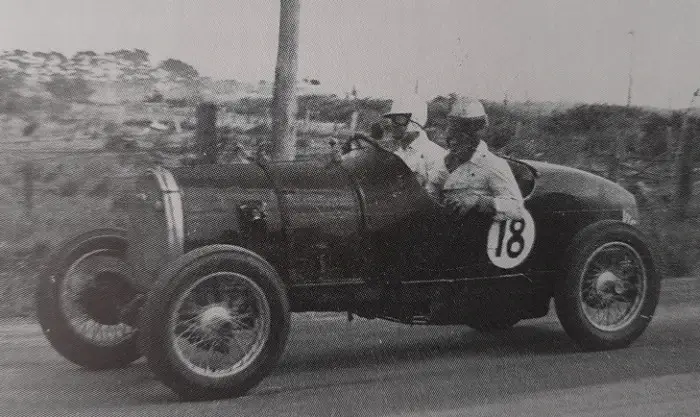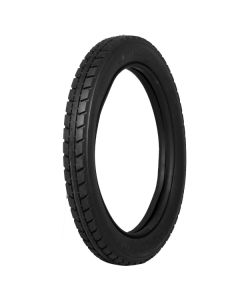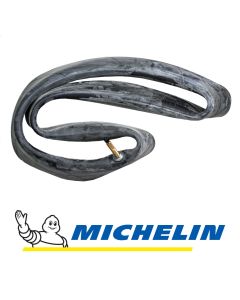Brescia Bugatti Tyres
Brescia Bugatti Type 13 & Type 23 1920–1926

- The Brescia Bugatti Type 13 and Type 23 vintage sports cars fitted 710 x 90 beaded edge tyres.
- The tyre we recommend in this size is the 710 x 90 Ensign Chevron Cord, It looks like the period Dunlop and has a strong carcass.
- Beaded edge vintage tyres need an innertube. We suggest fitting the H/D Michelin Innertube 710X90.
- We suggest a minimum of 60 psi with the Type 13 Bugatti and 65 psi with the Type 23 Brescia Bugatti on beaded edge wheels.
- Many of the type 13 Bugatti change onto 19” wheels for more grip and fit 400-19 tyres.
- We would suggest caution when fitting well-based wheels on a Brescia Bugatti as the extra grip often makes them roll. So keep the tyre pressure high.
History of the Bugatti Type 13

Bugatti Brescia of Tom McNamara 1938 Phillip Island Grand Prix
The Bugatti Type 13 began with the prototype model "Type 10" in Ettore Bugatti's basement workshop, a design he constructed during his time as Chief Engineer for Deutz Gasmoteren Fabrik (Deutz AG) in Cologne in 1908-1909. The Type 10 featured a monobloc, straight-four overhead-cam engine that Ettore had designed himself, this engine was highly innovative in its time. The engine was fitted to an open-top roadster body with solid front and rear axles and leaf springs provided suspension to the front and no suspension on the rear. The brakes of the car were operated with cables that would trigger the rear drum brakes. Today, the car is in a private collection in California.
Eventually Ettore would finish his contract with Deutz and make his way to Alsace to seek out a factory to begin producing his own cars in. With Ettore beginning operations in his new Molsheim factory, the Type 10 prototype would evolve into the Type 13, bumping the engine size up to 1.4L and adding a major advancement in engine technology, the Bugatti designed four-valve head. Leaf springs were now fitted to the rear as well, providing suspension to all four corners. The Type 13 started competition life in 1910, going against much bigger bulkier cars than the 13s short and simple construction. The 13s advantage over the competition was its superior handling, steering, and braking, this became Bugatti's design ethos from then on. In 1911 the 13 competed in the French Grand Prix at Le Mans. It was an odd-looking placement in the lineup, however, after a gruelling 7 hours of racing, the 13 placed second.
When the war broke out Ettore would bury the parts of three 13s near his factory, keeping safe so that following the war, the cars would be dug out and then prepared for racing. Ettore himself took two completed models to Milan with him during the war. Following the war, the Type 13 dominated in races. In the Brescia Grand Prix, the top 4 positions were all Bugattis. Celebrating this, all of the 4-valve Bugatti models were badged with the Brescia name. Following the competition success of the 13, Buggati produced a tourer model, the Type 23 Brescia Tourer. This was equipped with the multivalve Brescia engine, with 2000 models built, this became the first full-production multivalve engine car ever made.




